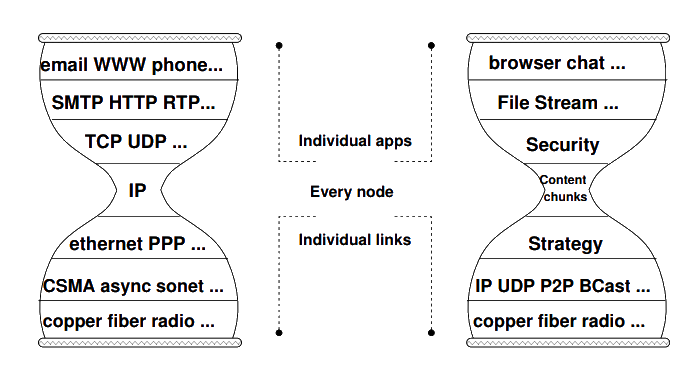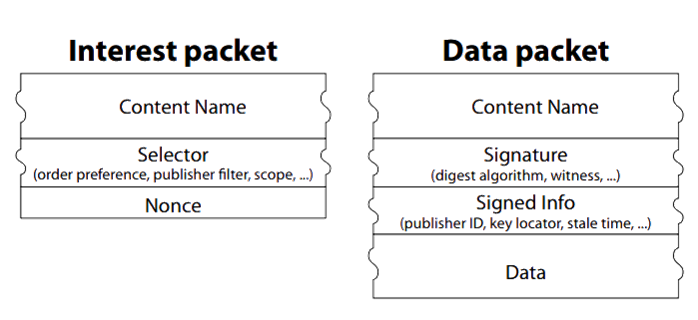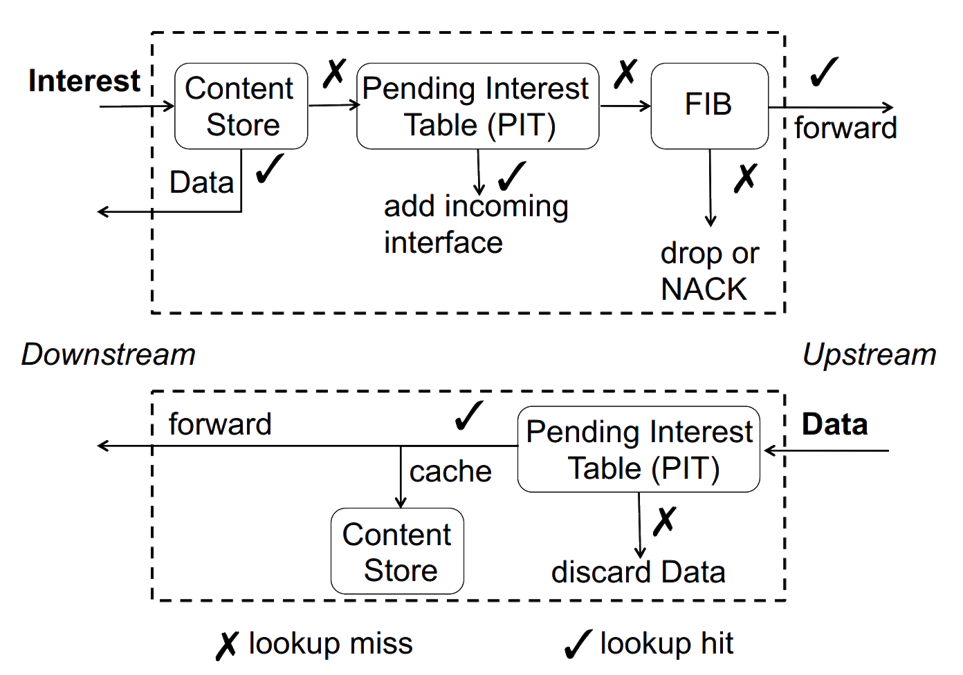Information Centric Networking
Let’s briefly discuss the Information Centric Networking (ICN) architecture we use as a representative in this project. As the Figure 1 shows, the Content Centric Network (CCN) replaces the bottleneck in IP stack with named data (content chunks). We use the terms CCN and Named Data Networking (NDN) interchangibly in this article,

The NDN communication protocol uses two packets namely: Interest and Data packets, to retrieve any content of interest. The packets structure is shown in the Figure 2. The communication protocol usually begins with a user interested in some content generating an Interest with the respective ContentName.

The Content Centric Networking (CCN) forwarding engine model used in NDN contains three main components as shown in the Figure 3: the Content Store (CS), the Pending Interest Table (PIT) and the Forwarding Information Base (FIB).

The Data retrieval process is shown in Figure 4. When the Interest arrives at a CCN router in the forwarding engine of the router the CS is checked to see if the content with the same name already exists in which case the content is returned. In case of a CS miss PIT is checked to see if an Interest with the same name has already been forwarded. If yes, then the incoming face of the Interest is recorded. If not, an entry is added to the PIT and the FIB is checked to find the forwarding face and the Interest is forwarded.

When a Data packet arrives, the CS is checked, and if a matching entry is present then the Data packet is discarded otherwise the CS stores the Data and PIT is checked. If an entry is found in the PIT then the Data is forwarded to all the outgoing faces recorded in the PIT for this ContentName.